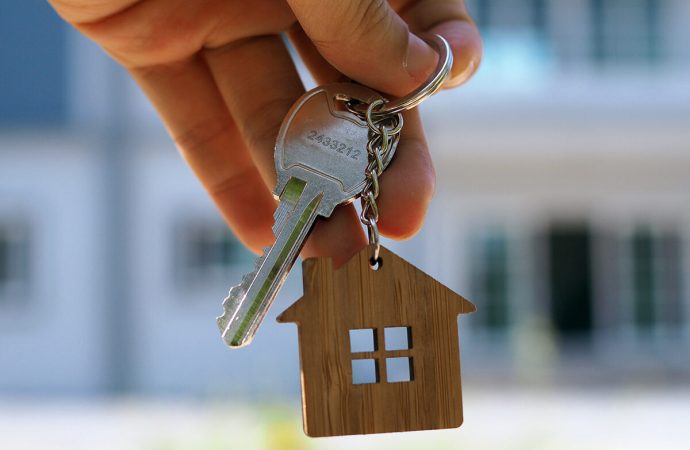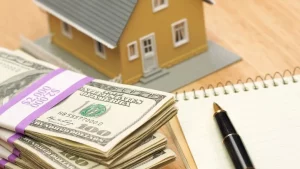Homeownership Expenses Demystified: How Much Does It Really Cost? The dream of owning a home is one many aspire to achieve. It represents financial stability and a place to call your own. However, homeownership comes with a range of expenses that extend beyond the initial purchase price. In this in-depth guide, we will demystify the
Homeownership Expenses Demystified: How Much Does It Really Cost?
The dream of owning a home is one many aspire to achieve. It represents financial stability and a place to call your own. However, homeownership comes with a range of expenses that extend beyond the initial purchase price. In this in-depth guide, we will demystify the real costs of owning a home, from monthly bills to unexpected emergencies.
Beyond the Purchase Price
When people contemplate homeownership, they often fixate on the purchase price, a substantial sum that represents the culmination of years of hard work and saving. Yet, the purchase price is just the beginning of the financial commitment involved in owning a home.
- Down Payment: The journey to homeownership commences with a down payment, usually a percentage of the property’s purchase price. While significant, it is only one part of the overall cost.
- Monthly Mortgage Payments: Your monthly mortgage payment is a fundamental ongoing expense. It encompasses two main components: the principal, which reduces your loan balance, and the interest, which represents the cost of borrowing money. As time progresses, the balance between these two elements shifts, with more of your payment going toward the principal.
- Property Taxes: Property taxes are a continuing financial obligation, determined by your property’s assessed value and local tax rates. Property taxes can fluctuate significantly based on location, impacting your financial planning.
- Homeowners Insurance: Protecting your investment is essential. Homeowners insurance provides coverage for property damage, personal liability, and more. The cost varies based on the property’s value, location, and the extent of coverage you choose.
- Maintenance and Repairs: Every home requires regular maintenance and occasional repairs. This ongoing expense is crucial to prevent more significant, costlier issues down the road.
Table 1: Ongoing Homeownership Costs
| Expense | Frequency | Average Cost |
|---|---|---|
| Utilities | Monthly | Varies |
| Homeowners Association | Monthly/Annually | Varies |
| Lawn and Garden Care | Seasonal | Varies |
| Pest Control | As needed | Varies |
| Renovations and Upgrades | Periodic | Varies |
Understanding Ongoing Costs
Owning a home is not just about the purchase price or the down payment. It also involves various ongoing expenses, some foreseeable and others unpredictable. Here’s a closer look at these costs:
- Utilities: Utility bills are a substantial monthly expense, including electricity, water, gas, and internet. Costs depend on your consumption and local provider rates. Implementing energy-efficient practices can help lower these expenses.
- Homeowners Association Fees: If your property is part of a homeowners association (HOA), you’ll have monthly or annual fees to consider. These fees cover communal expenses such as landscaping, security, and the maintenance of shared amenities. HOA fees can vary widely based on the services provided.
- Lawn and Garden Care: If your property includes a yard or garden, you’ll need to budget for seasonal maintenance. This can include lawn mowing, gardening, leaf removal, and landscaping. The cost depends on the size of your property and the level of care you desire.
- Pest Control: Pest problems may occasionally arise, necessitating professional extermination services. The cost depends on the severity of the issue and the services required.
- Renovations and Upgrades: Over time, you may wish to make changes to your home. These periodic expenses can vary widely depending on the scope of the project. Whether it’s a kitchen remodel, a bathroom renovation, or a room addition, planning and budgeting for these projects is essential.
Image by: https://www.tchabitat.org/
Unexpected Expenses
Unforeseen expenses are a part of homeownership, and being prepared for them is essential:
- Emergency Repairs: Major issues like roof leaks, plumbing problems, or electrical failures can be costly and unexpected. An emergency fund can help you cover these unforeseen repairs, ensuring the safety and habitability of your home.
- Property Assessments: Homeowners’ associations may levy special assessments to fund significant community projects. These can be unexpected and have an impact on your finances.
- Property Value Fluctuations: The real estate market is subject to fluctuations that can affect the value of your property. These fluctuations can impact your equity and influence your long-term financial plans.
- Natural Disasters: Damage from natural disasters, such as hurricanes, wildfires, or floods, may not be fully covered by standard homeowners insurance. It’s essential to prepare for potential natural disasters and consider additional coverage if you live in an area prone to specific risks.
Preparing for Homeownership Costs
Being a responsible homeowner involves thorough financial planning. Here are essential steps to prepare for homeownership costs:
- Budget Wisely: Create a comprehensive budget that includes all the costs associated with owning a home, from mortgage payments and property taxes to ongoing expenses like utilities and maintenance.
- Emergency Fund: Build an emergency fund to cover unexpected repairs and expenses. Having savings set aside for unforeseen circumstances will provide peace of mind and financial stability.
- Regular Maintenance: Invest in regular maintenance to prevent larger repair bills. Regular inspections and maintenance of your home’s systems, such as HVAC, plumbing, and roofing, can extend their lifespan and reduce the likelihood of costly repairs.
- Insurance Coverage: Review your homeowners insurance to ensure it adequately covers your needs. Depending on your location, you may need additional coverage for specific risks, such as floods or earthquakes.
- Market Trends: Stay informed about local real estate market trends to understand property value fluctuations. This understanding can help you make informed decisions about when to buy, sell, or make renovations.
Conclusion
Homeownership is a significant milestone, offering a sense of stability and a place to call your own. However, it’s essential to be aware of the ongoing costs beyond the initial purchase price. Understanding these expenses, budgeting wisely, and preparing for unexpected costs are vital for successful and sustainable homeownership. By considering all aspects of homeownership costs, you can enjoy the benefits of owning your own home while maintaining financial stability and peace of mind. Your home sweet home is not just a place to live; it’s a long-term investment in your future.


















Leave a Comment
Your email address will not be published. Required fields are marked with *